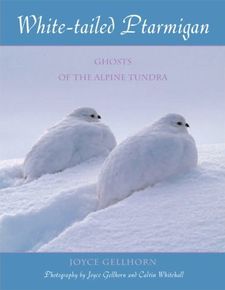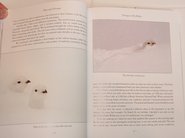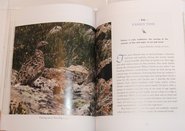Reviewed by Grant McCreary on July 20th, 2007.
I make it a regular practice to check Amazon.com for new bird books. While doing so earlier this year I discovered this book that was scheduled to be published later in the year. I probably would have overlooked it if I hadn’t been planning a trip to Colorado at the time. One of, if not the, top target on this trip was the White-tailed Ptarmigan. I’ve got a collector’s personality and like to get a little memento to remember places I’ve gone and things I’ve seen. But other than photographs, it’s hard to do something like that with birds. So even though there were virtually no details available on this book at the time I decided that I would buy it if I did see a ptarmigan. In April 2007 I went on the trip (trip report), and fortunately the first life bird I saw was the ptarmigan. Now I’m even gladder that I did, because otherwise I would have missed this wonderful book.
Just about anything you wanted to know about these fluff balls of a bird can be found here, from the origin of the word “ptarmigan” to their life history and behavior. The book is organized in a unique and effective way. Each chapter details the lives of the birds during one calendar month, starting with January. It tells where the birds are and what they typically do during this time of the year. The author, who has obviously spent a lot of time amongst these birds, punctuates this with many personal observations. These stories give the text a more informal tone and keep it from becoming dry and boring.
It should be pointed out that the book focuses on the ptarmigans of Colorado, where the author lives. The species’ overall range is shown, and the habitat and elevation that it occupies in various parts of this area is also given. And of course most of the biology and behavior will be shared across the entire population. But the month-based organization of the book may mean that some of the information here will not apply across the entire range. For instance, ptarmigans in Colorado will leave their wintering grounds in April. But those in Alaska, for example, may not do so until later in the year. This actually appealed to me since this is where I had seen my first ptarmigan, and I had been to some of the locations mentioned in the book. This made it more real and relevant to me. However, others may feel differently (although I would wager that most birders who have added White-tailed Ptarmigan to their life list did so in Colorado).
The book is liberally illustrated with photographs taken by the author and Calvin Whitehall. The photographs alone are worth the price of the book – they are that good. The adults are shown in many different stages of molt. Additionally, there are photos of habitat, nests, and chicks. My favorite is one of two birds roosting in the snow with just their heads visible (see the sample to the right).
This book is particularly recommended to anyone who hopes to see White-tailed Ptarmigan, especially in Colorado. There is a wealth of information here that could possibly help, such as the fact that the birds leave their winter range by April 20th (I made it with less than a week to spare!). Additionally, there is a very detailed map of the bird’s range in the state (it includes county lines and some cities). But the photographs would be useful to someone searching for this bird anywhere.
But I would go even further and recommend it to everyone. This is a fascinating bird, and the author has presented a wonderful glimpse into its singular life and world.
Disclosure: I get a small commission for purchases made through links in this post.








Comment